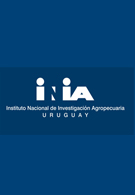ABSTRACT.- Soil health (SH) is inherently dynamic, and traditional soil surveys do not capture it. Its spatiotemporal variability presents challenges to understanding its drivers. We applied machine learning (ML) models and digital soil mapping (DSM) techniques to integrate SH observations with remotely-sensed data products for regions in New York State, representing soil forming factors, cropping systems, and management. Four biological (soil organic matter, permanganate-oxidizable C, protein, and respiration) and two physical (water aggregate stability and available water capacity) soil indicators as well as a composite SH index were evaluated to 1) quantify the relationships among climate, inherent soil properties, and land use to SH indicators; 2) develop data-driven models for predicting and mapping SH indicators at regional scale; and 3) use predicted SH maps to estimate impacts from hypothetical regional land use change scenarios. Model performance varied among SH indicators and region, with R2 values ranging from 0.47 to 0.71 in the smaller domain and from 0.45 to 0.65 in the larger one. The models include conventional effects of inherent soil properties and climate on SH, but also prove the pivotal role of land use and cropping systems, explaining on average 63% of SH variation. Positive effects were associated with perennial forage crops, and adverse effects of intensive annual crop production. Also, biomass production and cycling strongly affect SH. Modeling SH responses to land use changes at a regional scale showed interactions between management and inherent properties that can affect SH benefits from alternative cropping systems. Overall, the geospatial application of ML models to mapping SH provides insights into its drivers that can support the design of informed policies and management interventions to improve SH. © 2025 The Author(s)

